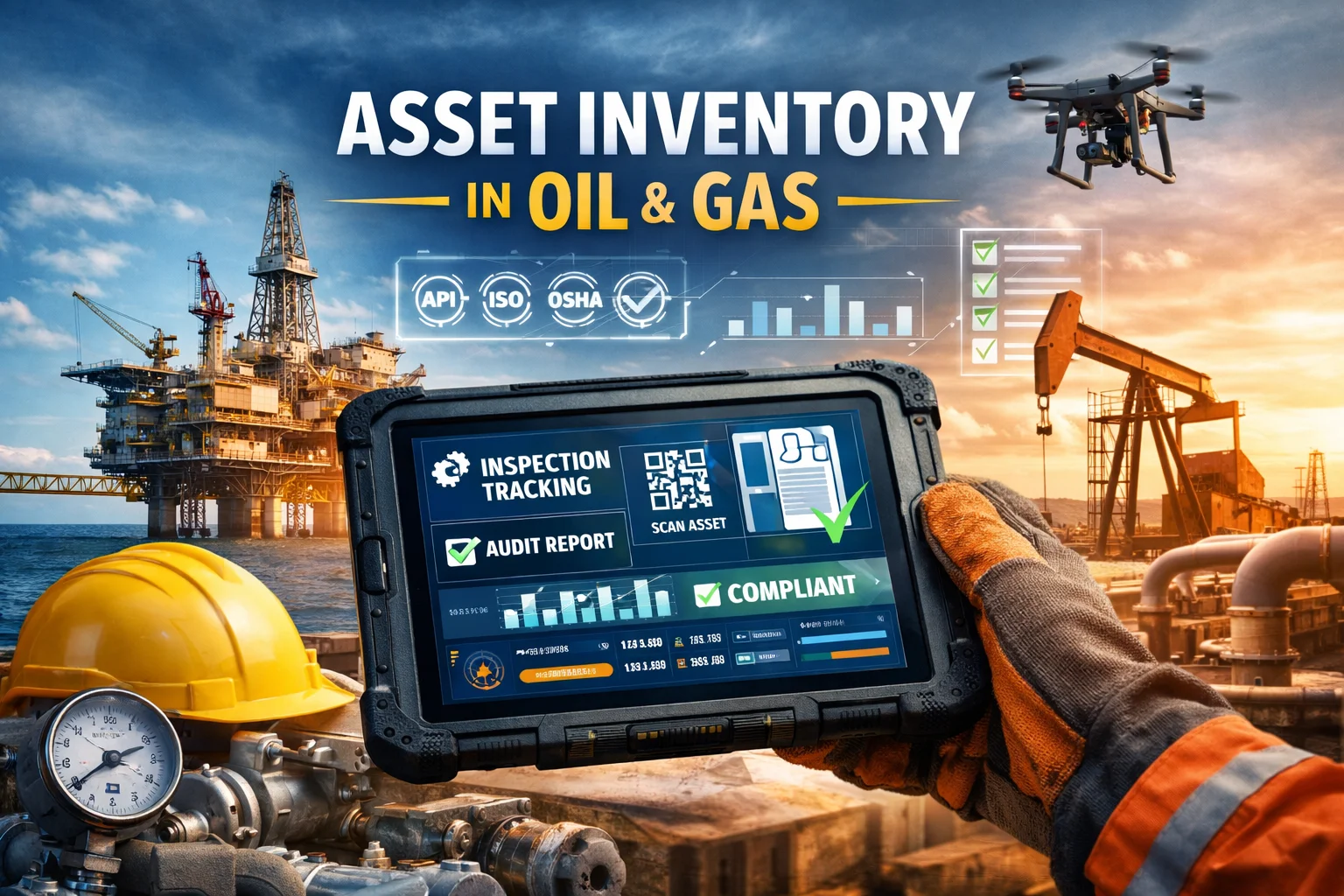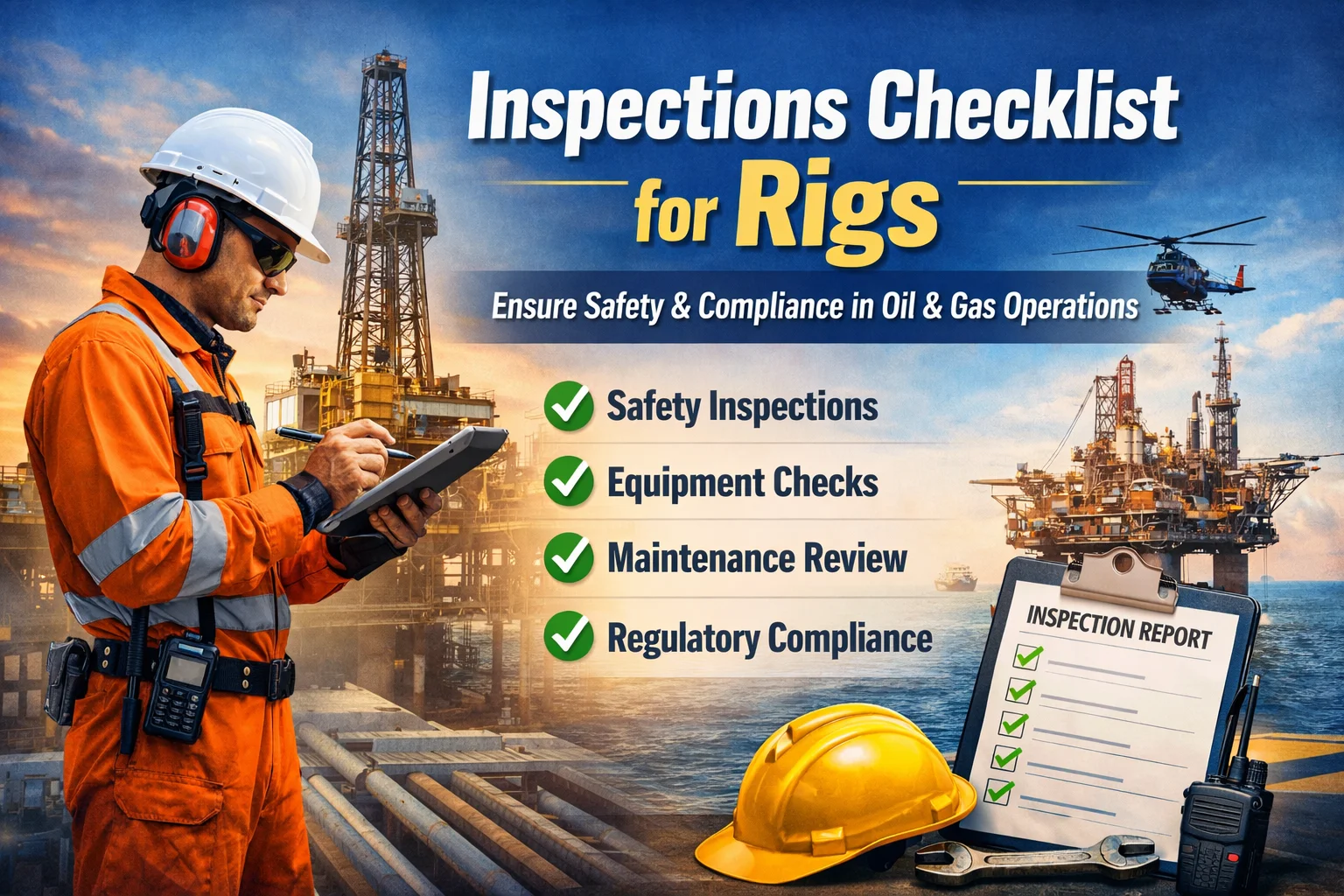Inspections Track Software For Oil and Gas Inspection Industry

When it comes to the oil and gas industry, safety and efficiency are top priorities. One critical aspect that ensures both is the proper use of lifting devices. These devices handle heavy loads, support complex operations, and play a vital role in day-to-day rig activity. Whether you are managing offshore drilling platforms or onshore processing plants, understanding the types of lifting devices used is essential for operational success.
In this blog, we’ll walk you through the major types of lifting devices used in oil and gas, their functions, and how digital inspection tools like InspectionsTrack ensure their reliability and compliance.
Lifting devices are the backbone of material handling in oil and gas fields. They reduce manual effort, increase productivity, and most importantly, mitigate the risk of accidents. Moreover, with harsh environments and strict regulations, these devices must undergo regular inspections and certifications.
That’s where InspectionsTrack makes a difference. It digitizes your lifting gear inspections, eliminating paperwork and improving compliance.
Let’s break down the most commonly used lifting devices by category.
Cranes are perhaps the most visible lifting equipment on oil rigs. They are used to move heavy machinery, containers, and other materials. Common types include:
| Crane Type | Use Case | Location |
|---|---|---|
| Offshore Pedestal Cranes | Lifting equipment from supply vessels | Offshore platforms |
| Gantry Cranes | Moving loads in shipyards or yards | Onshore sites |
| Jib Cranes | Swinging materials in fixed radius | Workshops |
Cranes must be inspected regularly to avoid structural failures, and digital tools like InspectionsTrack can automate these checklists.

Read more : how to inspect cranes and winches step by step guide
These are compact lifting devices used to raise or lower loads vertically. They’re ideal in spaces where cranes are not feasible.
Because they often operate in confined spaces, accurate inspection is critical, and that’s where offline inspection capabilities from InspectionsTrack are especially useful.

Read more : what to look for during a crane and winch inspection
While small in size, slings and shackles are essential in securing loads. They come in various types:
| Lifting Gear | Type | Application |
|---|---|---|
| Slings | Wire rope, Chain, Synthetic | Attaching load to lifting equipment |
| Shackles | D-type, Bow-type | Connecting lifting devices |
Even minor damage can compromise safety. InspectionsTrack logs daily, weekly, and monthly inspections and makes them easily accessible for audits.
Used to distribute the load evenly across multiple lifting points, these devices prevent load damage and improve balance.
Inspectors often include weld integrity, bend detection, and load test records in checklists — and they can manage all of it digitally using InspectionsTrack’s customizable modules
Many companies still rely on outdated methods, even though the equipment itself is advanced:
These outdated systems can lead to missed inspections, non-compliance, and even incidents on-site.
InspectionsTrack is built specifically for the oil and gas industry. Here’s how it supports lifting equipment management:
| Feature | Benefit |
|---|---|
| Custom Inspection Templates | Tailor inspections to each lifting device |
| Offline Mode | Perform inspections without internet |
| Real-Time Dashboards | Monitor compliance across assets |
| Automated Scheduling | Never miss an inspection again |
| Audit Trails | Stay ready for audits and certifications |
Whether you’re on an offshore platform or a remote drilling site, InspectionsTrack ensures your lifting equipment is safe, certified, and ready to perform.

Understanding the types of lifting devices in oil and gas operations is only the beginning. Maintaining their integrity through regular inspections and data-driven insights is what ensures long-term safety and performance.
By shifting to smart inspection software like InspectionsTrack, your team gains real-time visibility, efficiency, and peace of mind.
Read more : ai chatbots in inspection software
Operators most commonly use offshore pedestal cranes to load and unload supply vessels.
Regulatory bodies and usage guidelines recommend performing daily visual checks and scheduling monthly or annual certifications
With InspectionsTrack’s offline mode, you can perform inspections seamlessly and sync the data as soon as you’re back online.

In the oil and gas industry, assets are not just equipment they are critical investments that directly impact safety, compliance, operational efficiency, and profitability. From drilling rigs and lifting equipment to pipelines, valves, and pressure…

In the oil and gas industry, rig inspections are critical for maintaining operational safety, regulatory compliance, and equipment reliability. A comprehensive inspections checklist for rigs helps companies prevent accidents, reduce downtime, and optimize asset performance….
SkySoft Connections provides quality IT services around the globe. Our services begin with experience and end with dedication, ensuring innovation and reliability
© Copyrights, 2024 All Rights Reserved Skysoftconnections
Contact us
Get notified about new articles